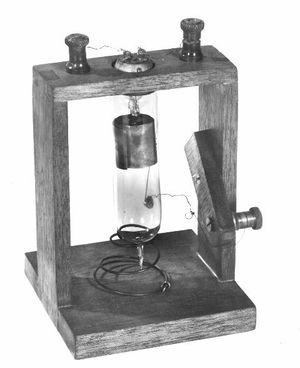Fleming Valve: Difference between revisions
From ETHW
No edit summary |
m (Text replace - "[[Category:Components,_circuits,_devices_&_systems" to "[[Category:Computers and information processing") |
||
| Line 5: | Line 5: | ||
16 November 1904. London, England. Beginning in the 1880s Professor [[John Fleming|John Ambrose Fleming]] of University College London investigated the [[Edison Effect|Edison effect]], electrical conduction within a glass bulb from an incandescent filament to a metal plate. In 1904 he constructed such a bulb and used it to rectify high frequency oscillations and thus detect wireless signals. The same year Fleming patented the device, later known as the 'Fleming valve.' | 16 November 1904. London, England. Beginning in the 1880s Professor [[John Fleming|John Ambrose Fleming]] of University College London investigated the [[Edison Effect|Edison effect]], electrical conduction within a glass bulb from an incandescent filament to a metal plate. In 1904 he constructed such a bulb and used it to rectify high frequency oscillations and thus detect wireless signals. The same year Fleming patented the device, later known as the 'Fleming valve.' | ||
[[Category: | [[Category:Computers and information processing]] | ||
[[Category:Measurement]] | [[Category:Measurement]] | ||
[[Category:Electromagnetic_measurements]] | [[Category:Electromagnetic_measurements]] | ||
Revision as of 15:44, 22 July 2014
This article is a stub. You can help the GHN by expanding it.
16 November 1904. London, England. Beginning in the 1880s Professor John Ambrose Fleming of University College London investigated the Edison effect, electrical conduction within a glass bulb from an incandescent filament to a metal plate. In 1904 he constructed such a bulb and used it to rectify high frequency oscillations and thus detect wireless signals. The same year Fleming patented the device, later known as the 'Fleming valve.'
